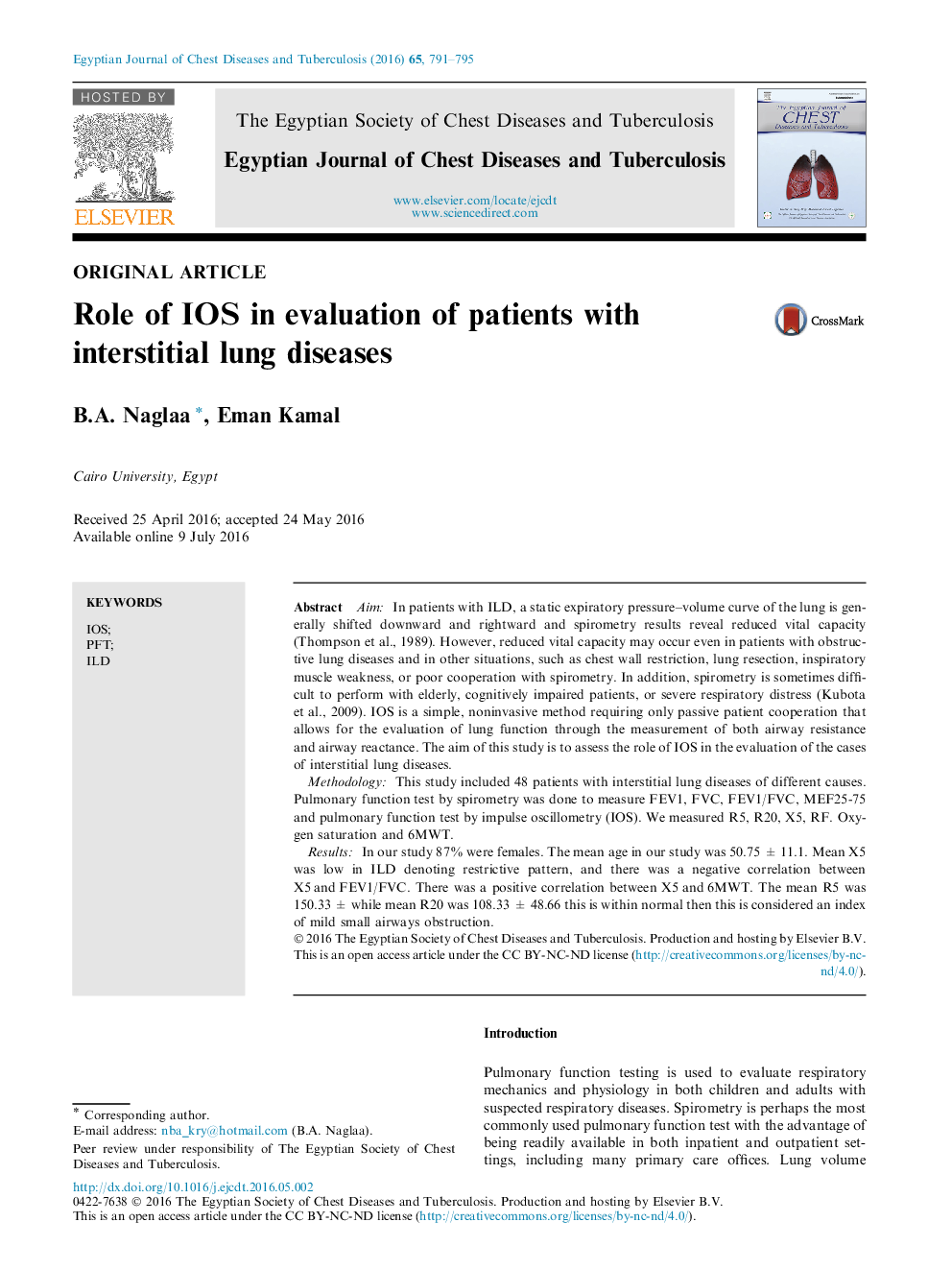| Article ID | Journal | Published Year | Pages | File Type |
|---|---|---|---|---|
| 3399801 | Egyptian Journal of Chest Diseases and Tuberculosis | 2016 | 5 Pages |
AimIn patients with ILD, a static expiratory pressure–volume curve of the lung is generally shifted downward and rightward and spirometry results reveal reduced vital capacity (Thompson et al., 1989). However, reduced vital capacity may occur even in patients with obstructive lung diseases and in other situations, such as chest wall restriction, lung resection, inspiratory muscle weakness, or poor cooperation with spirometry. In addition, spirometry is sometimes difficult to perform with elderly, cognitively impaired patients, or severe respiratory distress (Kubota et al., 2009). IOS is a simple, noninvasive method requiring only passive patient cooperation that allows for the evaluation of lung function through the measurement of both airway resistance and airway reactance. The aim of this study is to assess the role of IOS in the evaluation of the cases of interstitial lung diseases.MethodologyThis study included 48 patients with interstitial lung diseases of different causes. Pulmonary function test by spirometry was done to measure FEV1, FVC, FEV1/FVC, MEF25-75 and pulmonary function test by impulse oscillometry (IOS). We measured R5, R20, X5, RF. Oxygen saturation and 6MWT.ResultsIn our study 87% were females. The mean age in our study was 50.75 ± 11.1. Mean X5 was low in ILD denoting restrictive pattern, and there was a negative correlation between X5 and FEV1/FVC. There was a positive correlation between X5 and 6MWT. The mean R5 was 150.33 ± while mean R20 was 108.33 ± 48.66 this is within normal then this is considered an index of mild small airways obstruction.
